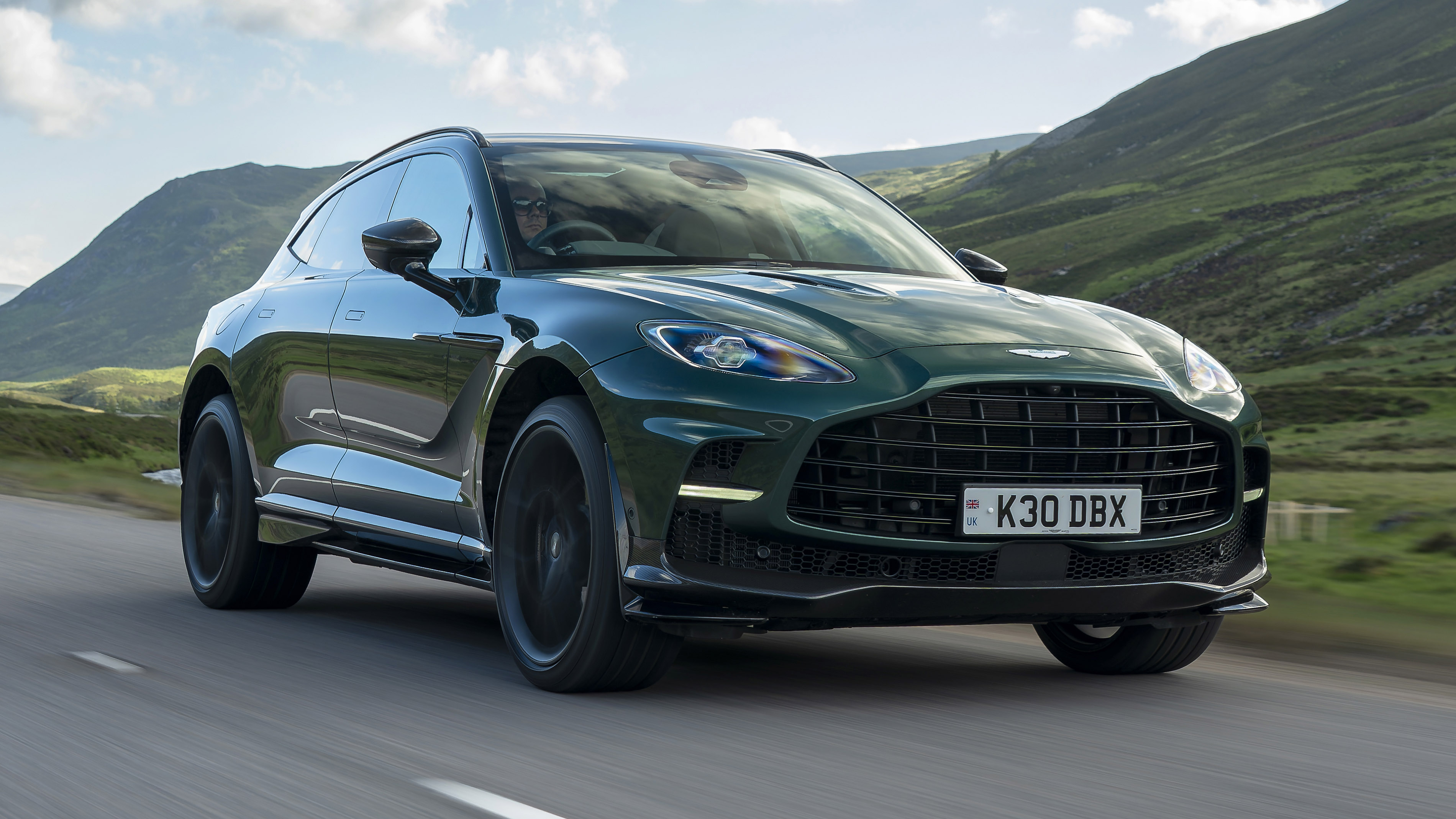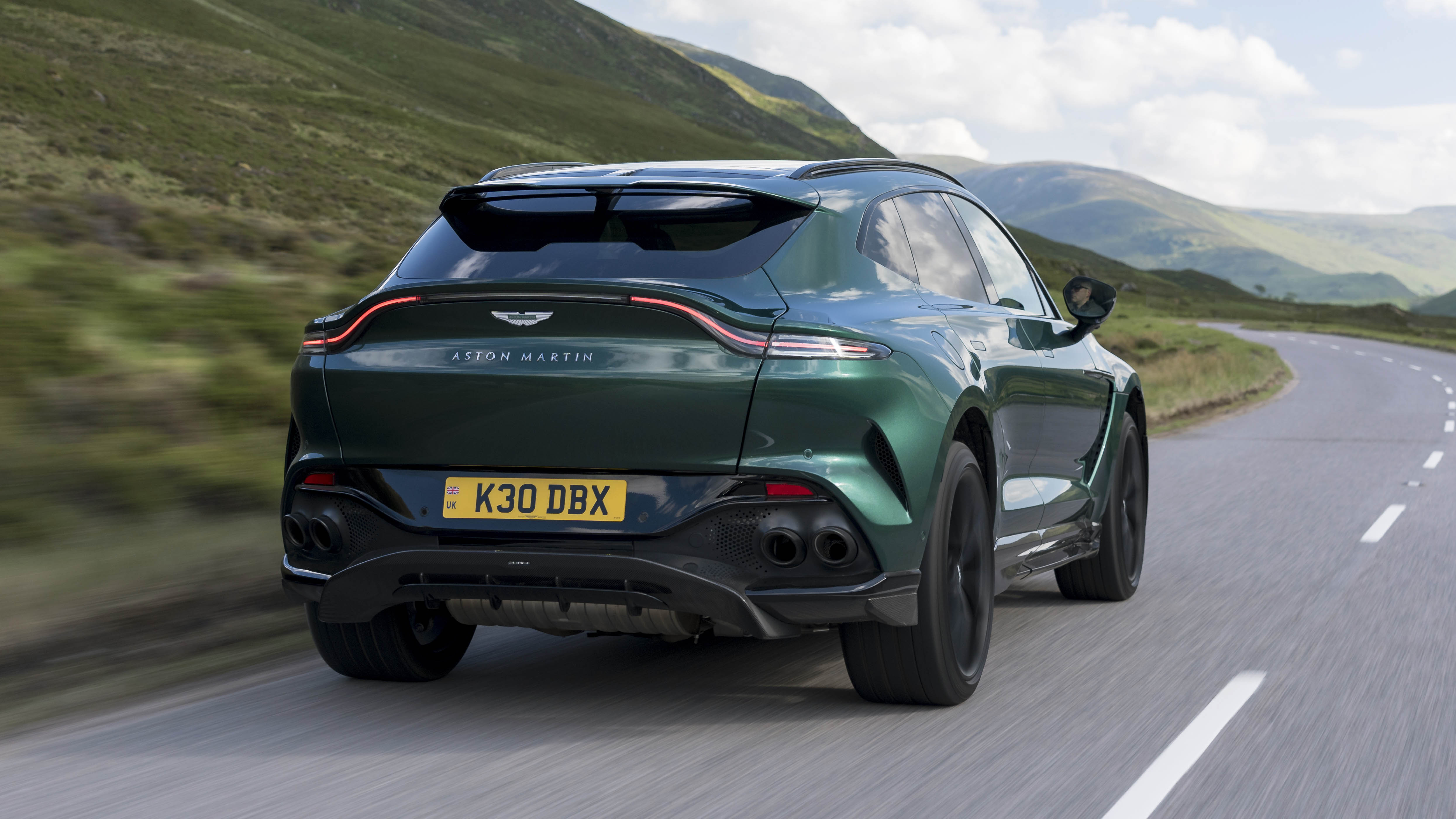
Good stuff
An Aston Martin SUV that feels like one, noisy and fun, infotainment now up to scratch
Bad stuff
Heavy on fuel, still a few quality and refinement niggles, looks are polarising
Overview
What is it?
The DBX was Aston’s first SUV in its 100-plus years of history. And more importantly for its future, an attempt to wedge open the tall car-centric doors of global markets such as China, the Middle East and the USA. Places deeply attached to the idea of Big Vehicle Status.
It was also a stab at making a genuinely useable, practical, everyday Aston... unlike the four-door Rapide. Remember that?
The DBX is built at a production facility in St Athan, Wales, and having been originally launched in 2020 it was facelifted in mid-2024.
What did that facelift do?
While before you could have the Mercedes-sourced 4.0-litre biturbo V8 with 542bhp and 516lb ft of torque, post-facelift you can now only have the more powerful DBX707 with its 697bhp (707PS) and 663lb ft of torque. After it arrived in 2022, that was the only one anybody wanted anyway. Aston tells us that in the second half of 2023 when both versions were still on sale, over 90 per cent of orders were for the 707.
The DBX707 uses different turbos with additional cooling to create that power. The world’s most powerful luxury SUV is the claim. Or rather was until the 715bhp Ferrari Purosangue came along.
The facelift didn’t actually result in many mechanical changes, so you still get the same engine and Merc-made nine-speed auto gearbox combo. The triple-chamber air springs and active dampers have been tweaked so that there’s a little more body control, and the exhaust wakes up earlier to provide more noise at lower RPMs.
We’re told there’s also slightly more steering assistance in GT mode to make motorway driving that little bit more comfortable, and the 0-60mph time has actually dropped from 3.3 seconds to 3.1 seconds.
That doesn’t sound like much of a facelift?
Doesn’t look like much of one either. In terms of exterior changes there are new wing mirrors (with the same funky folding action as the DB12 and Vantage), a new Aston badge and a slightly redesigned rear spoiler without the little carbon lip of before. A few new paint colours too, but that’s about it.
The remaining hardware is a striking bit of design work by AM’s design overlord Marek Reichman, featuring elements you don’t usually see in the toolkit of blocky SUV design tropes, and the DBX is all the better for it. There’s a long bonnet that butts up against a generously raked ‘screen, a low roofline and a pinched ducktail at the rear that apes the Vantage. There’s muscle and tone in the side profile, a long wheelbase and plenty of detail. Aston always manages to hit the spot with this stuff, where Bentley, and especially Rolls, have struggled.
When it was new the 707 gained a bigger grille at the front, a larger diffuser at the rear and a load of other detail over the standard DBX.
So, is anything new now?
Well, Aston knows that the biggest criticism of the DBX was its outdated infotainment system. The lack of a touchscreen interface (clickwheel operation only here) meant it lagged well behind rivals in the tech stakes, so there’s now a 12.3-inch infotainment screen and a 10.25-inch driver display with Aston’s own ‘Pure Black’ tech a la DB12 and Vantage. New steering wheel too, along with plenty of proper physical buttons on the centre console.
Do I have to have the rapid one? Surely a hybrid is more important?
Yes, but a hybrid is also more costly to develop, and there’s the question of whether the world’s wealthy actually want a hybrid SUV, or if they’d prefer to carry on burning hydrocarbons until the exhaust starts gargling in the rising sea levels. Now, Aston has done a 430bhp mild hybrid V6, but it’s for China only.
Does it out-handle an Urus? Out-comfort a Bentayga?
Not quite. But then an Urus is pretty aggressive and tough on passengers, and the Bentayga isn’t the sort of SUV you’d ever hustle down a twisty road. You might have a go, but if ever there was a sports SUV that after four corners tells you it’s had enough, that’s it.
The DBX707 is a proper hoot. Even naughtier exhaust note, wild acceleration and a lust for life (and the far horizon) that is genuinely surprising and thrilling from an SUV.
Our choice from the range

What's the verdict?
In a sector crying out for some difference, the DBX provides it. It looks interesting, goes really very well and hits all the targets. It does feel like an Aston Martin product, and is a really very practical and well packaged SUV (running costs aside). It can manage off-road, feels suitably sporty even on a track – if you must – and generally has the chops to make light work of the grind.
The 707 moved the game on from the standard car. Yes, it’s faster and more aggressive if pushed, but when you back off it’s every bit as comfortable and undemanding as the regular car. And not a lot less efficient. And then with the facelift Aston addressed what needed changing (the infotainment) and decided on small gains rather than revolution elsewhere.
The DBX707 is a polarising thing: yet another brawny, bawdy V8 petrol SUV in a world increasingly turned on by efficiency. But saying that, it’s a very decent translation of Aston Martin into the cash-generating sector that is the SUV market. It was a little late to the party, but if this is Aston’s Porsche Cayenne moment that allows the company to settle and produce ever more decent GT/sports cars (and the DB12 and new Vantage suggest it does), then that’s a good thing.
It’s noisy and fun, practical and interesting, imposing and challenging. Nobody ever bought an Aston from a spec sheet, they buy them because of the brand, the heart, the passion. It might not be everyone’s cup of tea, but that doesn’t mean it isn’t a decent brew. As far as 4x4s go, perhaps only the Purosangue is more addictive.










